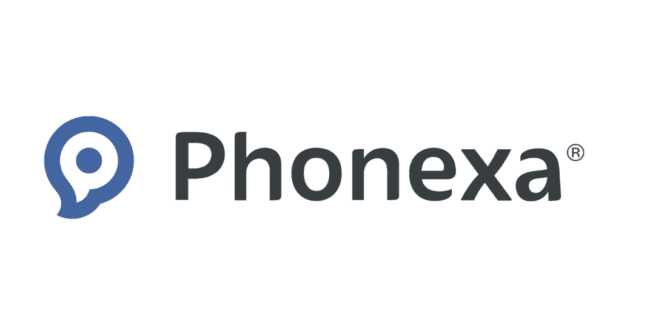While affiliate marketing continues to grow, unfortunately the opportunity to weed out traffic and fraud remains a persistent challenge for businesses and affiliate managers alike.
We’ve partnered with Anura this month, to create a comprehensive guide to help shed light on the state of affiliate fraud, its impact on your profit margins, and strategies to detect issues early and prevent it from having a negative effect on your affiliate relationships and corresponding ROI.
5 simple best practices for working with private or sub affiliate networks:
To mitigate the risk of incoming fraud, brands and advertisers should adhere to the following best practices when selecting to work with sub-affiliate networks:
- Network Selection: Choose reputable affiliate networks with a proven track record of combating fraud as part of their own USPs. Ask questions about how they recruit and onboard, or vet, their publisher base. Research their anti-fraud measures and policies before partnering together and ask for customer references to ensure that they are operating compliantly and with industry best practices embedded in their network offering.
- Terms and Conditions: Thoroughly review and understand the network’s terms and conditions for their publishers. Typically these are easily found on the network website if you simply click on the sign up as an affiliate link. Take a look at what they are asking affiliates in their network to adhere to. Ensure that the terms the network is asking affiliates to perform to also align with your program best practices and goals especially in terms of descriptions for fraud prevention and penalties.
- Clear Guidelines: Establish and communicate clear marketing guidelines for affiliates, including acceptable traffic sources, promotional methods, and performance expectations and ensure that the network can provide your terms to the publisher prior to allowing them to join your program within the network.
- Tracking and Reporting: Implement robust tracking and reporting systems to monitor affiliate activities closely so that you can detect traffic sources by individual publishers and also by traffic source. Ask the network if you’re able to run tracking links for separate traffic sources and also if you’re able to pre-vet and approve affiliates prior to enabling them to join the program within the network.
- Regular Audits: Conduct periodic audits of affiliate activities and websites as well as keep an eye on their daily performance to identify any suspicious patterns or anomalies in sales data that may arise.
Understanding and recognising the most common types of affiliate fraud
Affiliate fraud can have severe consequences for businesses, including financial losses, skewed marketing data, and damaged reputations.
Understanding the various types of traffic fraud you could be receiving from unscrupulous partners is crucial for effective fraud prevention. The most common forms of fraud are listed below. You may have experienced some of these or never at all, the trick is to be aware of what to look for before it actually happens.

- Click Fraud: This involves artificially inflating click numbers by dubious means to increase earnings artificially, using automated bots or even human click farms. This is the most common type of fraud and it can drain advertising budgets and skew campaign metrics before you even know that it’s happening as it happens in real time.
- Cookie Stuffing: Cookies are dropped fraudulently on users’ devices without their knowledge or consent, potentially claiming commissions for sales that the affiliate didn’t actually influence.
- Typo Squatting: This involves registering misspelled domain names to divert traffic intended for legitimate websites. It can lead to lost sales and brand confusion.
- Incentivised Traffic: Some affiliates offer rewards for clicks or actions without the advertiser’s approval, leading to low-quality traffic and conversions.
- Proxy Traffic: Using VPNs or proxies to generate fake international traffic can manipulate geo-targeting efforts and lead to misallocated commercial resources.
- Malware and Adware: Malicious software can generate fraudulent clicks or conversions, often without the user’s knowledge.
- Lead Fraud: In lead generation campaigns, fraudsters may submit fake or low-quality leads to earn commissions.
- Coupon Fraud: Unauthorized distribution of coupon codes can lead to unattributed sales and commission disputes.
The prevalence of affiliate fraud in our industry
Quantifying the exact extent of affiliate fraud is challenging due to its evolving nature and the varying effectiveness of detection methods. Last month we hosted an informative webinar where the CEO of Anura, Rich Kahn outlined exactly what a pandemic affiliate fraud is in our industry and why it is a systemic problem for affiliate managers to monitor and manage monthly in their programs.
Anura’s own data estimates suggest that:
- Approximately 25-30% of all digital marketing activities involve some form of fraud.
- In high-risk verticals or regions, this percentage can climb significantly higher, sometimes reaching 45%.
- Certain types of fraud, such as click fraud, can affect up to 20% of pay-per-click advertising budgets.
These figures underscore the importance of robust fraud prevention measures in affiliate marketing programs.

Why is affiliate fraud a significant problem?
The impact of affiliate fraud extends beyond immediate financial losses which is the obvious first issue but more so it also has a long tail impact on other parts of your business outside of the affiliate channel:
- Financial Drain: Companies pay for fraudulent leads, clicks, or sales, directly impacting their bottom line ROI and the ability to leverage real sales revenue from sales that are not legitimate.
- Data Distortion: Fraudulent activities skew marketing analytics, leading to misguided strategic decisions of where and how to spend your budget to gain further momentum.
- Brand Damage: Association with fraudulent activities can harm relationships with customers and partners, potentially leading to long-term reputational damage especially when customers are sold misleading advice or given poor information about the products and services you offer or sell.
- Compliance Risks: Some fraudulent practices may violate regulations or advertising policies, exposing businesses to additional legal or financial risks.
- Resource Allocation: Combating fraud requires significant time, effort, and resources that could otherwise be invested in growth initiatives.
- Market Distortion: Widespread fraud can create an uneven playing field, disadvantageous to honest affiliates and advertisers.
Why is there fraud in affiliate marketing?
Several factors can create vulnerabilities in affiliate programs:
- Inadequate Real-time Monitoring: Lack of continuous, real-time traffic and conversion monitoring can allow fraudulent activities to go undetected.
- Insufficient Affiliate Vetting: Weak onboarding processes may allow unscrupulous actors to join affiliate programs and send and be paid for fraudulent traffic long before you can realize it.
- Last-Click Attribution: Overreliance on last-click attribution models can incentivise certain types of fraud and fail to capture the true customer journey.
- Outdated Tracking Technology: Inadequate or outdated tracking solutions may be unable to detect sophisticated or new to market fraud techniques.
- Vague Program Terms: Poorly defined or ambiguous program terms can create loopholes that fraudsters will tend to exploit.
- Lack of Ad fraud Software Use: Siloed data across different marketing platforms and channels can make it difficult to identify patterns indicative of fraud without having specialist fraud detection tools in place.
Effective program management tactics to combat fraud
To manage affiliate programs effectively in light of fraud risks there are several steps you can look to implement in your affiliate program management strategies as well as bringing additional tools in to help monitor and catch fraud before it begins!
- Implement Multi-layered Detection: Use a combination of automated systems and manual reviews to identify fraudulent activities. Tools like Anura.io which are TAG certified and can drill deep into general invalid traffic and sophisticated fraud traffic to ensure you’re not closing down traffic that can actually convert just because it falls into higher level alert categories.

- Adopt Advanced Attribution: Move beyond last-click models to understand the full customer journey and accurately attribute conversions.
- Set Performance Thresholds: Establish baseline performance metrics and investigate any anomalies or sudden changes.
- Regularly Update Program Advertising Policies: Keep program terms and conditions up-to-date to address new fraud techniques and close potential loopholes.
- Educate Team Members: Ensure all team members involved in affiliate management are trained in fraud detection and prevention.
- Foster Transparency: Maintain open communication with affiliates about fraud policies and consequences.
Strategies for avoiding affiliate fraud
Businesses can take proactive steps to minimize the risk of affiliate fraud:
- Thorough Due Diligence: Conduct comprehensive background checks on potential affiliates before approving them to your program.
- Robust Tracking Solutions: Invest in advanced tracking technologies like Anura with built-in fraud detection capabilities.
- Traffic Pattern Analysis: Closely monitor traffic patterns and conversion rates to identify suspicious activities.
- Suspicious Activity Alerts: Set up automated alerts for unusual patterns or spikes in traffic or conversions.
- Regular Audits: Periodically review affiliate accounts, traffic sources, and payout patterns.
- Limited Initial Access: Start new affiliates with limited access or lower commission rates until they prove their legitimacy.
Guidelines for vetting new affiliate traffic sources
When evaluating new traffic sources:
- Start Small: Begin with small-scale test campaigns to assess traffic quality before scaling up.
- Analyze Quality Metrics: Examine key performance indicators such as bounce rate, time on site, and pages per session.
- Use Third-party Verification before approving affiliates to your program: Employ independent traffic assessment tools to validate the potential traffic sources of new affiliate partners such as Semrush, Similarweb or Konnecto as an example.
- Verify Geographic and Demographic Data: Ensure traffic aligns with expected target audience characteristics.
- Monitor Conversion Rates: Be wary of sources with abnormally high conversion rates, as these may indicate fraudulent activity.
How can fraud detection solutions like Anura.io help?
Advanced fraud detection solutions play a crucial role in combating affiliate fraud especially in programs that have mass scale and operate across a number of geographical regions. Mature programs that work with multiple programs and networks can be difficult to manage manually with some of the points we’ve shared above.
This is where platforms like Anura.io offer several key benefits to brands who are wanting to scale without the hassle of having to weed out fraud at the same time:
- Real-time Fraud Detection: Identify and block fraudulent traffic before it reaches the website, preventing wasted ad spend and skewed data.
- Detailed Traffic Analytics: Provide in-depth insights into traffic quality, helping businesses make informed decisions about their affiliate partnerships.
- Seamless Integrations with your internal systems: Easily integrate with existing systems and workflows, minimizing disruption to operations.
- Resource Efficiency: Automate fraud detection processes, saving time and resources that would otherwise be spent on manual review.
- Continuous Updates: Regularly update fraud detection algorithms to stay ahead of evolving fraud techniques.
Affiliate fraud remains a significant challenge in the digital marketing landscape but by implementing a mix of best practices, leveraging advanced fraud detection technologies, and maintaining vigilance, companies can create robust affiliate programs that drive genuine growth while minimizing fraud risks.
Regular training, ongoing monitoring, and a commitment to transparency can help businesses stay one step ahead in the fight against affiliate fraud. By fostering a culture of trust and accountability within affiliate networks, the industry can work towards a more secure and profitable future for all legitimate stakeholders.
____________________________________________________________________________
Get a FREE trial of Anura’s fraud detection technology and discover how much of your traffic is potentially fraudulent before you pay for it!
Going to the ASE Summit in NYC? Book an appointment to take a closer look at how Anura helps brands stop fraud in its tracks!




















